Biomedicine is the main topic of the current annual report. Current research activities range from the automated production of in-vitro and in-vivo diagnostics, to the development of life-saving first aid for heavily bleeding wounds after serious injuries, to new processes for the standardized and validated production of different human tissue models. These and a number of other examples from our biomedicine-research can be found below in this annual report.
Project examples on the subject of biomedicine
Examples from current research
"AutoProNano"
"AutoProNano" – international cooperation for in vitro and in vivo diagnostics
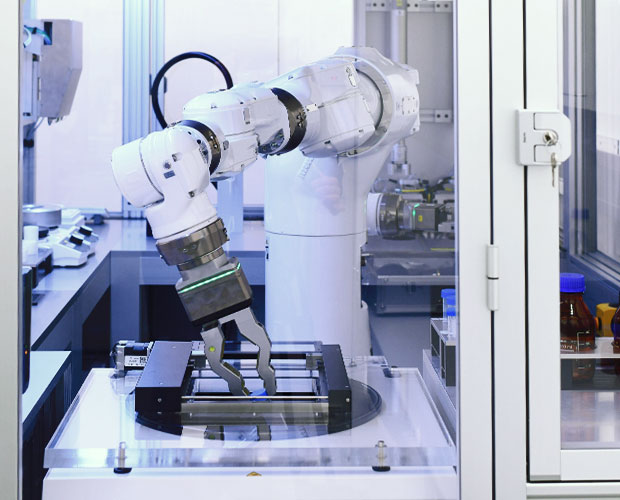
The French/German "AutoProNano" collaborative project is working on developing an automated process for the production of nanoparticles for advanced diagnostics. Through the collaborative efforts of French and German partners, the project aims to drive forward innovative technology for in vitro and in vivo diagnostics.
Biofunctionalized nanodiagnostics and therapeutics are predicted to play a truly revolutionary role in the future fight against major diseases such as cancer. In biomedicine too, demand is growing for functional nanoparticles with special optical or magnetic properties, as well as with bio-functional surfaces for antigen detection and drug loading. However, these nanoparticles must meet strict requirements in order to be approved as medical products. A key challenge is to ensure that the desired properties of the nanoparticles can be reliably reproduced. This requires a robust and precise production process that meets international standards and is scalable, cost-effective, and constantly controllable so as to guarantee outstanding quality.
As part of the French/German AutoProNano collaborative project, the Balingen-based plant manufacturer, Goldfuß engineering GmbH, is working with other German partners including nanoPET Pharma GmbH, the Fraunhofer Institute for Silicate Research ISC, and the Institute of Medical Engineering at the Technical University of Applied Sciences Würzburg-Schweinfurt (THWS) in addition to the French companies Cordouan Technologies and Poly-Dtech to develop an adaptable automation process for the production and analysis of diagnostically relevant nanoparticle systems.
The aim of the project is to establish a flexible, robotic process for the automated production and characterization of diagnostic nanoparticles for in vitro and in vivo diagnostics.
Fraunhofer ISC and Goldfuß engineering have already developed the basic principle of a robotic platform for the automated production of nanoparticles as part of the joint APRONA project funded by the German Federal Ministry of Education and Research (BMBF). Within the framework of AutoProNano, this platform is now being further developed in order to carry out essential synthesis processes automatically. This will ensure standardized product properties and allow relevant quality requirements to be taken into account as early on as the development phase.
Total funding for the French/German collaborative AutoProNano project is 1.5 million euros. German partners receive their funding under the German Federal Ministry for Economic Affairs and Climate Action’s (BMWK) Central Innovation Program for SMEs (ZIM), while French partners are supported by Bpifrance. The result is international collaboration that is making a significant step towards both state-of-the-art diagnostics and securing medical progress.
"CoSiMa"
"CoSiMa" – an innovative anti-aging face mask for stimulating connective tissue formation

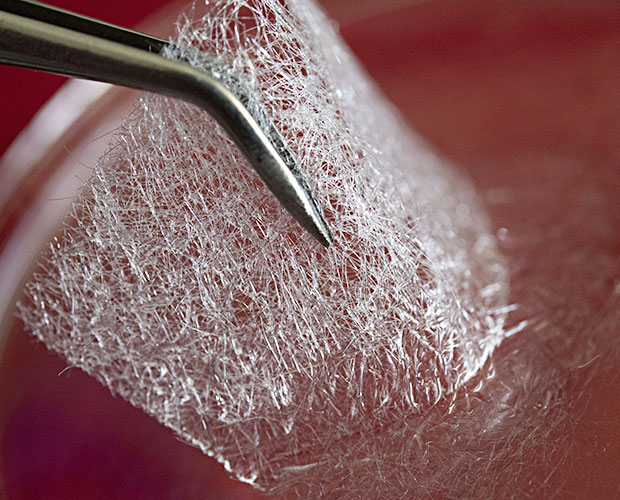
The CoSiMa project demonstrates just what collaboration between the Fraunhofer Institute for Silicate Research ISC and the cosmetics industry can lead to. Alongside their project partner, B-COS GmbH, a team of researchers from the Biomaterials Department have developed an anti-aging face mask that releases orthosilicic acid. This project has not only led to an extensive amount of new know-how in the field of sol-gel processes, but plans are also underway to bring the mask to market.
Orthosilicic acid (OKS) stimulates collagen production in the dermis. In contrast to standard cosmetic products, which plump up unwanted wrinkles in the skin with only a short-term effect, OKS is able to fill out wrinkles with longer-lasting impact. This also stimulates the body‘s own connective tissue formation, which generally reduces wrinkle formation. The research team from the Fraunhofer Institute for Silicate Research ISC in collaboration with their project partner decided to make use of precisely this effect.
The aim of the CoSiMa project is to develop a face mask which, when it comes into contact with an activation solution, dissolves, within a short application period, into orthosilicic acid without leaving behind any residue. This is then absorbed into the skin, achieving an anti-ageing effect.
In vitro testing proves OKS can be absorbed into the skin
After two and a half years of working on CoSiMa, the team was able to successfully complete the project in November 2022 and develop a promising demo version of the face mask. The demo mask consists of two components: a silica gel fiber fleece and an activation solution. The mask can be massaged into the skin within a time frame of three to five minutes and leaves virtually no residue. The team were able to prove that the orthosilicic acid is indeed absorbed into the upper layer of the skin. Whether the desired skin generation also occurs is still being dermatologically tested.
Silica gel fiber fleece as a basis
For the basis of the mask, the researchers resorted to a silica gel fiber fleece, which has been approved as a medical device for the regeneration of chronic wounds since 2010. However, with a face mask, the hydrolysis of the water-soluble OKS needs to happen at a somewhat faster rate than is necessary in the treatment of chronic wounds.
Therefore, to vary the silica-gel fleece matrix, the synthesis and process parameters were modified, and the effects produced by adding different substances tested. One challenge here was to enable dissolution at exactly the right time. The researchers succeeded in finding a combination of storage stability and activation trigger that dissolves the silica gel mask within the desired time to such an extent that the mask can be massaged gently into the skin. The research team discovered that the addition of lipophilic components – in the case of the demo mask, this component was sunflower oil – causes the silica gel materials to dissolve more quickly, allowing the mask to be more easily massaged into the skin. Overall, the project contributed to a significant expansion of know-how in the field of sol-gel-based materials.
Plans to bring the mask to market
This project was the first time that the Biomaterials Department at Fraunhofer ISC had been involved in the development of materials for cosmetic products and this initial partnership with the cosmetics industry will pave the way for new collaborations between Fraunhofer ISC and the cosmetics sector in the future. Fraunhofer ISC and B-COS believe the chances of turning the mask into a marketable product are good. For this to happen, the mask still needs to be tested at a recognized test institute for skin care products. Further discussions and plans to bring the product to market are currently underway.
"SAPs4Tissues"
"SAPs4Tissues" – human tissue models with customized biomaterials
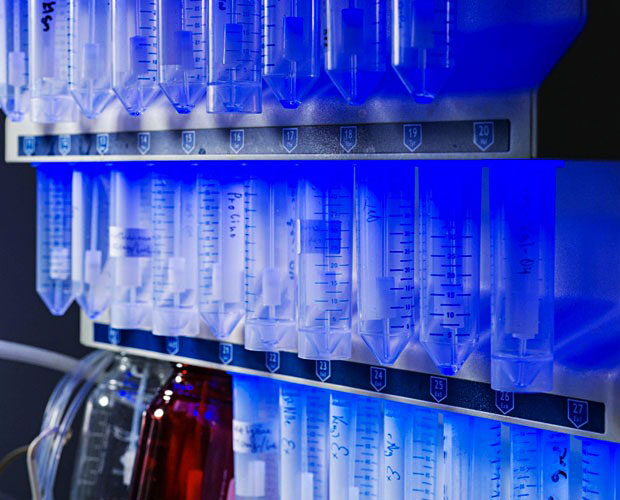
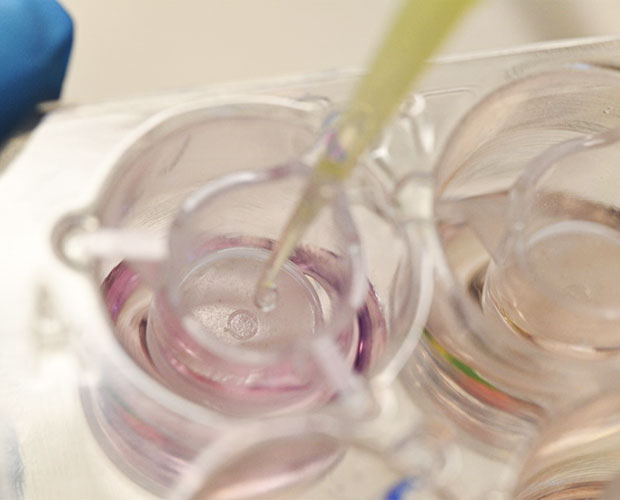
Human tissue models instead of animal experiments?
What is an already possible solution within some areas still faces major hurdles when used within more complex contexts and applications. A joint project carried out by the Max Planck Institute for Polymer Research, Mainz, and the Translational Center for Regenerative Therapies at the Fraunhofer Institute for Silicate Research ISC, Würzburg, is developing scientific bases and biomaterials for the standardized production of valid tissue models.
Modern medicine is becoming increasingly reliant on three-dimensional human tissue models during preclinical drug development. This is not only because, on an ethical level, these models are less problematic than animal testing, but also because, on a scientific level, they often constitute a more meaningful alternative. However, in order to be used for testing the risk and efficacy of drugs, these model systems must be as close as possible to human tissue in terms of morphology and functionality.
This is precisely where the SAPs4Tissue project comes in. With the help of ordered molecular protein building blocks – so-called peptide nanofibrils (SAPs) – and in combination with biological polymers, the physiological environmental conditions of the cell can be simulated. Human cells see, so to speak, their »natural environment« – known as the extracellular matrix – which is a soft biopolymer matrix surrounding them. In addition, the molecular building blocks are provided with chemical groups that enable the material properties to be specifically influenced with the aid of external signals, such as light or pH value. Researchers are hoping to use the resulting scaffold structure to transform human cells into specialized cells and to grow these as functional tissues such as the intestine.
This is made possible by methods known as tissue engineering – an interdisciplinary field of work that takes the principles from engineering and life science and applies them to targeted tissue cultivation. The project will also systematically investigate the relationships between molecular signature, three-dimensional structure, and tissue-specific function.
The project leaders, Dr. Christopher Synatschke, Dr. Tanja Weil (MPI Polymer Research), Dr. Marco Metzger, and Dr. Daniela Zdzieblo (Fraunhofer ISC) are confident that by bringing together the core competencies of biomaterials, stem cell biology, and tissue engineering, they will be able to produce a completely new class of scaffold structures that will enable the standardized construction of different human tissues. The success of this work would not only further boost core research into tissue and disease engineering but would also have a significant socio-economic impact by providing an alternative to animal testing, as well as more effective preclinical testing methods. This would have a direct impact on healthcare system costs.
The SAPs4Tissue project is funded by the Fraunhofer-Gesellschaft and the Max Planck Society.
"TraumaCare"
"TraumaCare" – first aid for severely bleeding wounds

Providing care for severely injured people is a significant challenge in civilian settings. Carrying out the same care during military operations means having to face the additional challenges of enemy fire, long travel times and distances, and inadequate supply. Yet, first aid has a decisive impact on the injured person’s chance of survival. Within the scope of the TraumaCare research project, Fraunhofer ISC is working alongside the German Armed Forces Hospital in Ulm to develop a solution that will enable first responders to treat severely bleeding wounds whilst they wait for professional medical care to become available.
Administering quick and effective first aid in areas of military conflict, in crisis situations such as terrorist attacks, and following accidents and disasters often constitutes a major challenge. Severely bleeding wounds, in particular, represent an acute threat to the survival of those affected. Uncontrollable bleeding often means that victims die at the place of injury before they are able to be treated in hospital. The TraumaCare project was launched with the aim of finding solutions to help better manage these life-threatening situations. The project is dedicated to the development of an easily applicable wound paste that first responders can use to stop bleeding and close the wound until professional surgical care can be administered in a medical center.
Current methods used by first responders to treat severely bleeding wounds include mechanical ligatures, hemostatic dressings (dressings that stop the flow of blood), and tissue adhesives. However, these treatments have their limitations in terms of applicability and the potential risk of additional tissue damage. TraumaCare is therefore working on finding an approach that will overcome these disadvantages.
The TraumaCare concept is based on three individual components. Firstly, fibers are used to mechanically strengthen the material. Secondly, a swellable component is employed that is able to fill the entire shape of the wound and generate counterpressure and, finally, a bonding component ensures that the overall material hardens into a stable closure.
In a proof-of-principle experiment, the developed material was tested on a cannulated pig hind leg. For this, the arterial system of the leg was flushed with a phosphate-buffered saline solution. Once the research team had used a stabbing tool to cause an injury, they applied the three-component material. After briefly and gently pressing the paste onto the wound, it quickly hardened, successfully closing the wound. The material could then be easily removed without affecting the intact arterial system.
Based on these promising results, the TraumaCare team plans to continue the project in the form of TraumaCare II, beginning in 2024 and running for two years. This next step will focus on developing an applicator to enable easy handling and transport of the material. In addition, standard operating procedures (SOPs) for material production will be drafted and suitable sterilization, packaging, and storage methods identified.
The goal is to obtain approval as a medical product so that the first-aid wound paste can be applied in medical practice.
"SUSI"
"SUSI" – on the way to autonomous hiPSC culture
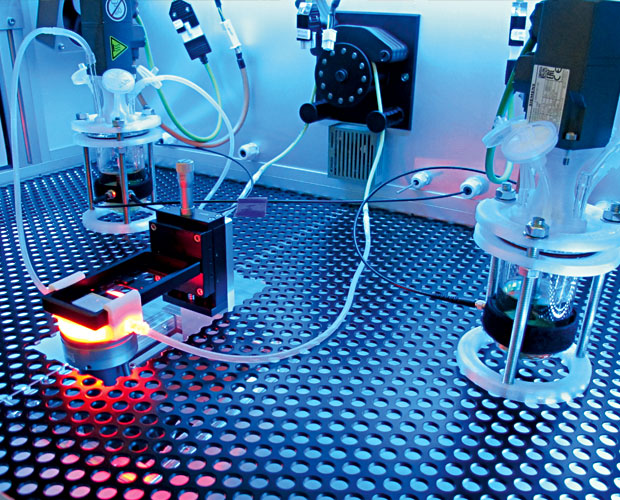
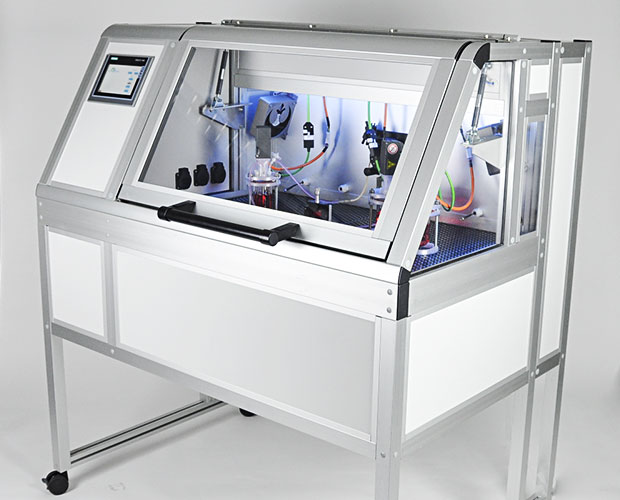
Research on human induced pluripotent stem cells (hiPSCs) holds great potential for the development of cell therapies, drugs, and disease research. Although hiPSCs are cultivated in a laboratory using adult cells, they demonstrate a high level of similarity to embryonic stem cells. However, producing large quantities of hiPSCs remains a challenge. To help overcome this, researchers at the Fraunhofer Institute for Silicate Research ISC have developed a bioreactor that enables automated long-term cultivation of hiPSCs.
Research on hiPSCs is one of the fastest growing areas in biology. Reprogramming connective tissue cells – which can be obtained relatively easily from adults – entails far fewer ethical issues than the use of embryonic stem cells. At the same time, the use of hiPSCs could also increase availability and comparability. Nevertheless, so far, it has been difficult to provide these reprogrammed cells in sufficient quantity and quality.
Bioreactor enables long-term cultivation
Novel solutions for the cultivation of hiPSCs are needed both to meet the growing demand and to enable standardized production in larger numbers. To respond to this demand, a team of researchers at the Fraunhofer Institute for Silicate Research ISC has developed a dynamic incubator and suspension bioreactor suitable for the long-term cultivation of hiPSCs. A fluid circuit, enabled by an interconnection of four valves, transports all liquid solutions required for the processes into a sterile environment. This allows for the fully automated propagation of hiPSCs and also minimizes the impact of human interactions.
Development of new cell therapies and drugs
The data obtained from the project has enabled the system to be adapted so that various differentiations from these cultures are also possible. As such, SUSI is contributing to the advancement of hiPSC technology. This technology will provide access to many human in vitro models for developing new cell therapies and drugs.
"TigerShark Science"
"TigerShark Science" – skin organoids derived from human stem cells as an alternative to animal testing
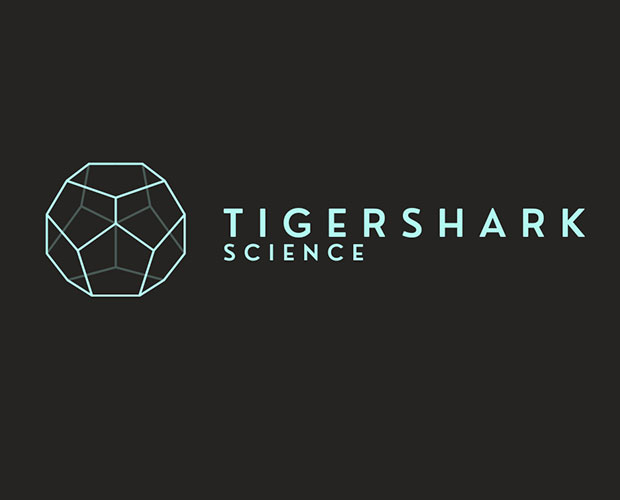
Animal testing has long been an integral part of medical and pharmaceutical research, but there are increasing concerns about this method, and not just ethical ones. The start-up project TigerShark Science has set itself the task of advancing alternatives to animal testing for use in the pharmaceutical and cosmetics industries. To this end, the project has successfully developed a skin organoid from human stem cells that could replace animal testing in the future.
Organoids are small cell aggregates cultivated in a laboratory that are used to realistically replicate organs. They make it possible to study the physiological processes of human organs under controlled conditions and thus have the potential to make an important contribution to medical and pharmaceutical research. The research team at TigerShark Science has now succeeded in developing a skin model that is able to generate almost all structures of human skin and consequently represents a realistic skin model – a significant advancement in this field.
Cultivating fully functional artificial skin with nerves, vessels, and hair
TigerShark Science‘s skin model is developed from programmed hiPS cells and forms complex structures such as hairs and nerves.
Based on a tissue engineering approach, miniature three-dimensional versions of human skin are produced in vitro. This not only makes the model suitable for a wide range of applications, it also brings with it a further benefit. Instead of using animal collagen, the matrix is produced by the human cells themselves. The skin model will primarily be used for research into diseases, and it will also be possible to produce skin disease models in vitro that imitate, for example, skin cancer or skin fibrosis, in order to study disease progression, the impact of drugs, and organ development.
An alternative to animal testing
For a number of years now, animal testing for cosmetic products has been banned in the EU and is only permitted for fully justified medical purposes. The use of in vitro test systems, therefore, should be able not only to eliminate ethical concerns, but also to meet legal requirements and pave the way for advanced research.
Further, animal experiments are often expensive and time-consuming. With human cell cultures, researchers are able to achieve faster and more precise results. In many cases, these results are also more transferable to humans. Accordingly, TigerShark‘s human stem cell skin organoid constitutes groundbreaking technology that has the potential to revolutionize research.
A spin-off of the start-up is planned for next year
Amelie Reigl, Dr. Dieter Groneberg, and Dr. Florian Gröber-Becker were able to win over the AHEAD jury with their start-up idea and are now in phase two of the program. This marked an important milestone for TigerShark who is now ready to take the next step. The team is working on a spin-off of the start-up and bringing the technology for growing human skin to market. Since complex skin models are not yet available on the market, the spin-off has tremendous potential.
Further information
"TOPS"
"TOPS" – minimizing the risk of infection in endo-exo prostheses using a fiber fleece
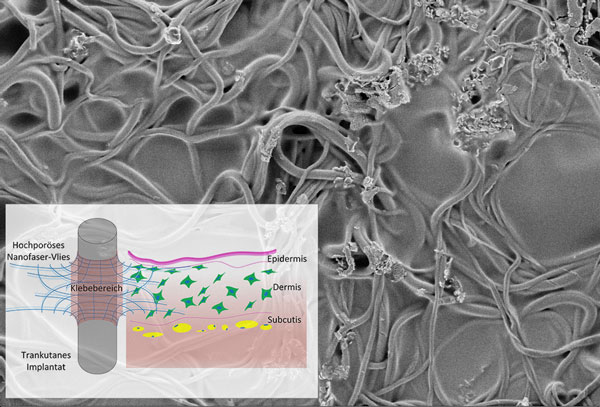
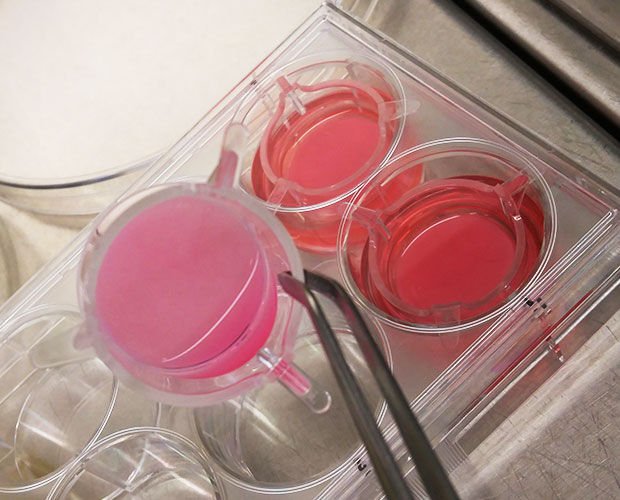
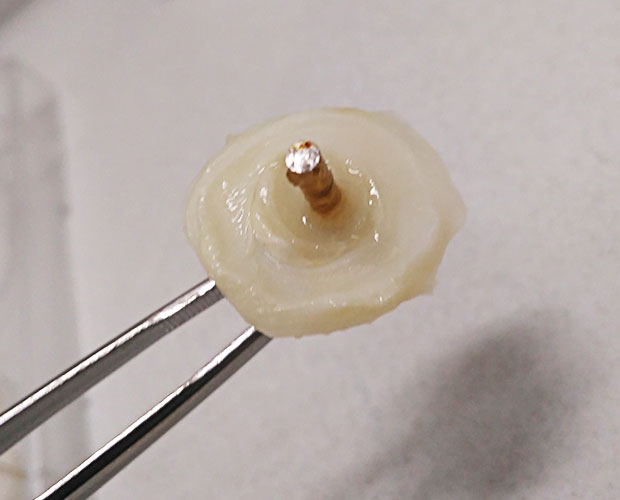
Researchers at Fraunhofer ISC have developed a novel fiber fleece that can create a covalent bond between the skin and the metal base of endo-exo prostheses. This minimizes the risk of infection and prevents permanent wounds. Future projects will further optimize the bonding and adapt the fiber fleece for use in different applications.
Amputations significantly lower patients’ quality of life. The »standard« means of compensating for loss of function are socket-guided prostheses, which are usually held in position by means of straps, static friction, or vacuum suspension. However, despite technological advances in this area, users are still experiencing problems. Skin irritations or a non-physiological movement sequence can be reasons as to why it is ultimately easier for the user to refrain from walking or standing up. So-called transcutaneous osseointegrated prosthesis systems (TOPS) can provide alternatives to this conventional technology. With these endo-exo prostheses, a stable metal base is firmly implanted in the body, with the prosthesis being attached from the outside. In other words, endo-exo prostheses literally pass through the skin.
Minimizing the risk of infection currently associated with endo-exo prostheses
For people with leg amputations, endo-exo prostheses have many advantages. No sweating, less skin irritation, and no slipping or complicated donning. Instead, these type of protheses offer improved freedom of movement, better perception, and greater power transmission. This results in a higher quality of life, especially for active and sporty patients. However, they also have a major disadvantage. Since the skin is unable to fully attach to the metal after the metal base has been surgically attached, an open gap remains between the skin and the metal base. This permanent wound must be carefully cared for on an ongoing basis and carries a constant risk of infection. Researchers at the Translational Center for Regenerative Therapies have found a solution to this problem. By means of modified fiber fleeces developed at the Fraunhofer ISC, it may be possible to avoid these permanent wounds in the future.
Preclinical tests have been successful
In collaboration with the German Armed Forces Hospital in Berlin, the biomimetic fiber fleece that had already been developed at ISC was adapted and a covalent bond to the implant was developed.
On the one hand, this fleece promotes the long-term ingrowth of skin cells and, on the other hand, enables a firm connection to the metal. Initial tests on in vitro skin models showed very good colonization of the fiber material with skin cells and the formation of an epidermis over the fleece that serves as a barrier against pathogens. Preclinical in vivo tests have now also been successfully carried out. The planning stages confirm the compatibility of the fleece with tissue and the immune system. As a prerequisite for clinical translation, further in vivo studies investigating the efficacy of the entire transcutaneous in vivo implant are required.
Looking forward to future projects
A follow-up project is already underway. The BARTIM project (Biohybrid Bacterial Barriers for Transcutaneous Implants) seeks to further optimize the covalent bonds and test their applicability to different materials. For example, they could also be used in the catheterization of paraplegics, cardiac support systems, or external fixators. The research team’s aim is to increase the chances for clinical translation by ensuring the broadest possible applicability.
"ScarCare"
"ScarCare" – A bioresorbable membrane for healing internal and external wounds
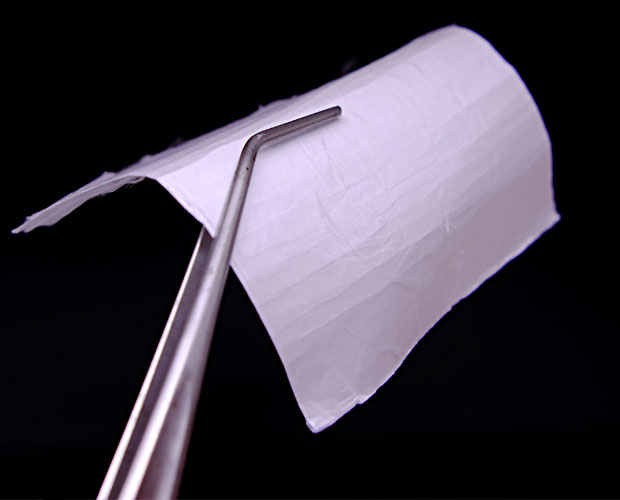
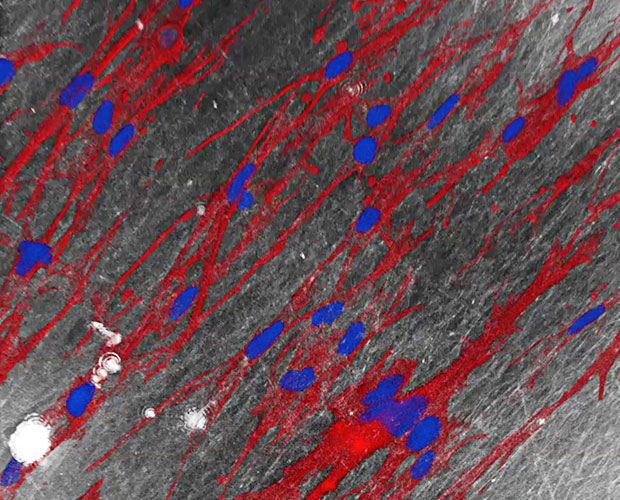
Chronic wounds are a major burden, both for patients and for the healthcare system. Researchers at the Fraunhofer Translational Center for Regenerative Therapies TLC-RT have developed a membrane that represents a big step forward in chronic wound treatment. This is because the membrane continues to allow nutrients to pass through, which is fundamental to ensuring wounds heal.
Once a wound has become chronic, treatment can become a protracted challenge. People with impaired wound healing, such as diabetic patients, are particularly affected. A non-healing wound on the foot often leads to limited mobility, which significantly reduces quality of life and, in the worst case, may lead to amputation.
A solution is now in sight that will help treat chronic wounds. Researchers from TLC-RT at the Fraunhofer Institute for Silicate Research ISC and the Fraunhofer Institute for Toxicology and Experimental Medicine ITEM have developed a membrane that could be used to heal internal and external wounds. The team has produced an electrospun membrane from the bioresorbable silica gel Renacer® that is neither toxic to cells nor genotoxic. This novel matrix mimics fibrous structures found in connective tissue and is completely biodegradable.
The starting point for this development was a fiber fleece that had already been approved for the treatment of chronic wounds. This fleece dissolves during the healing process and is completely dissolved after 6 to 8 weeks. Researchers have now modified its structure so that it mimics the fibrous structures of connective tissue and is therefore well accepted by the body‘s own cells.
To do this, the research team reduced the diameter of the fibers by a factor of more than 50, so that the fibers now have a diameter of less than one micrometer. Using the electrospinning method, the team has succeeded in spinning a silica-gel sol into a close-meshed silica-gel membrane.
While the original fiber fleece made of 50 μm thick fibers is inserted externally into a chronic wound, the thinner fiber fleece is also suitable for intraoperative applications. A typical application would be to use the fiber fleece to cover filler material used for bone defects in the jaw in order to accelerate wound healing. In principle, the membrane can be bonded in the body with biodegradable adhesives.
What distinguishes the Renacer® membrane from conventional products is that the open-mesh membrane enables nutrient transport, whilst still preventing cell passage. The tissue is therefore adequately supplied, and the body can remove metabolic products. In addition, it is possible to integrate active ingredients into the membrane that will then be released as the fleece gradually dissolves.